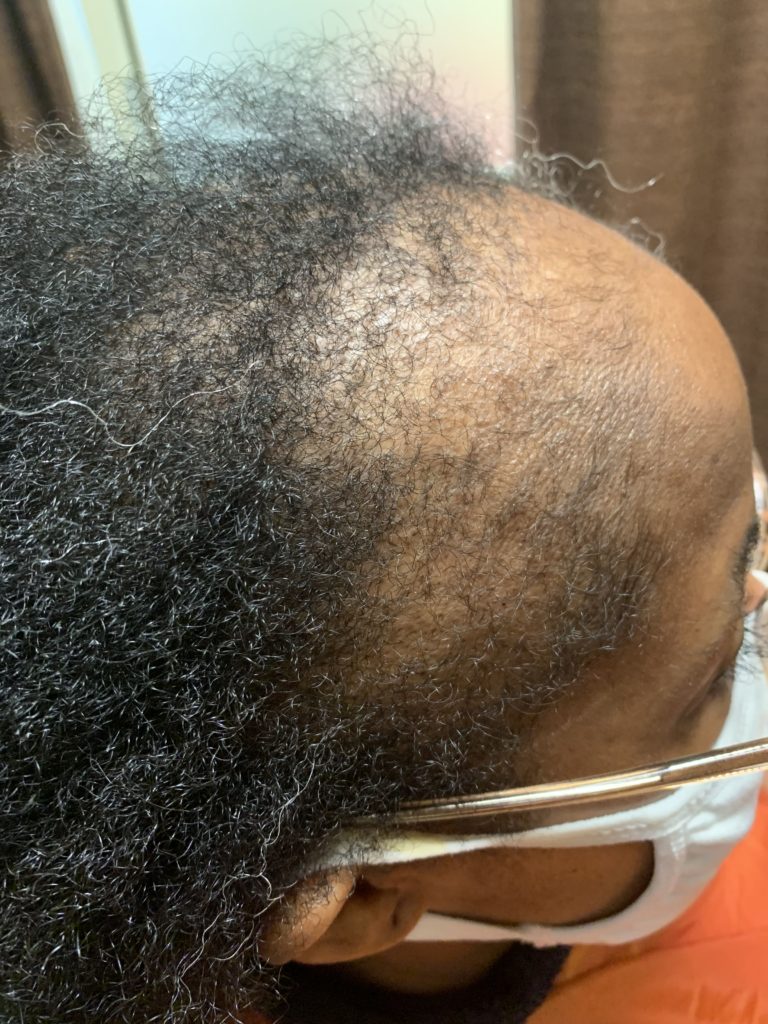
In the world of hair health, various factors can contribute to hair loss. One such condition that often flies under the radar is traction alopecia. Characterized by hair loss resulting from tension or pulling on the hair, merits a closer look to comprehend its nuances and explore the underlying causes. In this article, we dive into the dynamics of traction alopecia, shedding light on what it is and the factors that instigate this form of hair loss.
Defining Traction Alopecia: A Strain on Strands
Traction alopecia is a form of hair loss caused by prolonged and repetitive tension on the hair follicles. Unlike some other types of alopecia that may have genetic or autoimmune origins, traction alopecia is often a result of external factors. These factors are primarily related to hairstyling practices and grooming habits.
Hairstyles Under Scrutiny: The Culprits of Tension
Certain hairstyles are notorious for causing traction alopecia, and these often involve tight pulling or tension on the hair. Common culprits include tight ponytails, braids, cornrows, and extensions that exert constant pressure on the hair follicles. Over time, this persistent tension can lead to weakened follicles and subsequent hair loss.
Everyday Accessories with Consequences: Tension in Disguise
In the pursuit of style, everyday accessories such as hair ties, headbands, and hair clips can become silent contributors to traction alopecia. The gripping force applied by these accessories, can gradually compromise the health of hair follicles.
Grooming Practices: Balancing Beauty and Hair Health
While the allure of sleek hairstyles is undeniable there are styles that contribute to traction alopecia. These may be excessive use of hot tools, frequent chemical treatments, and aggressive brushing. Hair loss is common when grooming is not executed with care and moderation. This may weaken the hair shaft and follicles.
Traction Alopecia in Certain Professions: A Unique Challenge
Individuals in professions that require specific hairstyles, such as models, dancers, or athletes, may be more prone to traction alopecia due to the constant demand for tight hairstyles or restrictive headgear. Recognizing the potential impact on hair health becomes crucial for those in such professions to mitigate the risk of traction alopecia.
The Vulnerable Areas: Delicate Zones at Risk
Certain areas of the scalp are more susceptible to traction alopecia, primarily the frontal hairline, temples, and the nape of the neck. These regions often bear the brunt of hairstyling practices and are more prone to the adverse effects of tension, leading to noticeable hair loss that may progress if the causative factors persist.
Recognizing Early Signs: A Call for Action
Understanding the early signs of traction alopecia is pivotal for timely intervention. Underlying symptoms may include itching, redness, and tenderness in the affected areas. More obvious symptoms may be the gradual thinning of hair. Adjusting hairstyling practices and seeking professional advice can prevent further progression of traction alopecia.
Prevention and Recovery: Nurturing Strands Back to Health
Preventing and addressing traction alopecia involves a twofold approach. First and foremost, individuals should prioritize gentle hairstyling practices. Ideas like opting for looser hairstyles and avoiding excessive tension. Secondly, if signs of traction alopecia manifest, adopting a hair care routine that promotes follicle health.
By striking a balance between personal style and hair health, we can preserve the resilience and beauty of our strands, ensuring that the grip on our tresses remains gentle, allowing them to thrive and flourish.
Our professionals at Parker Trichology Center and Salon are here to help you regain top notch hair health and your confidence back. To meet with our certified trichologists located in Carrollton TX, contact our salon here or call 214-307-6200 today. Do not wait to heighten your health and your hair growth experience.



